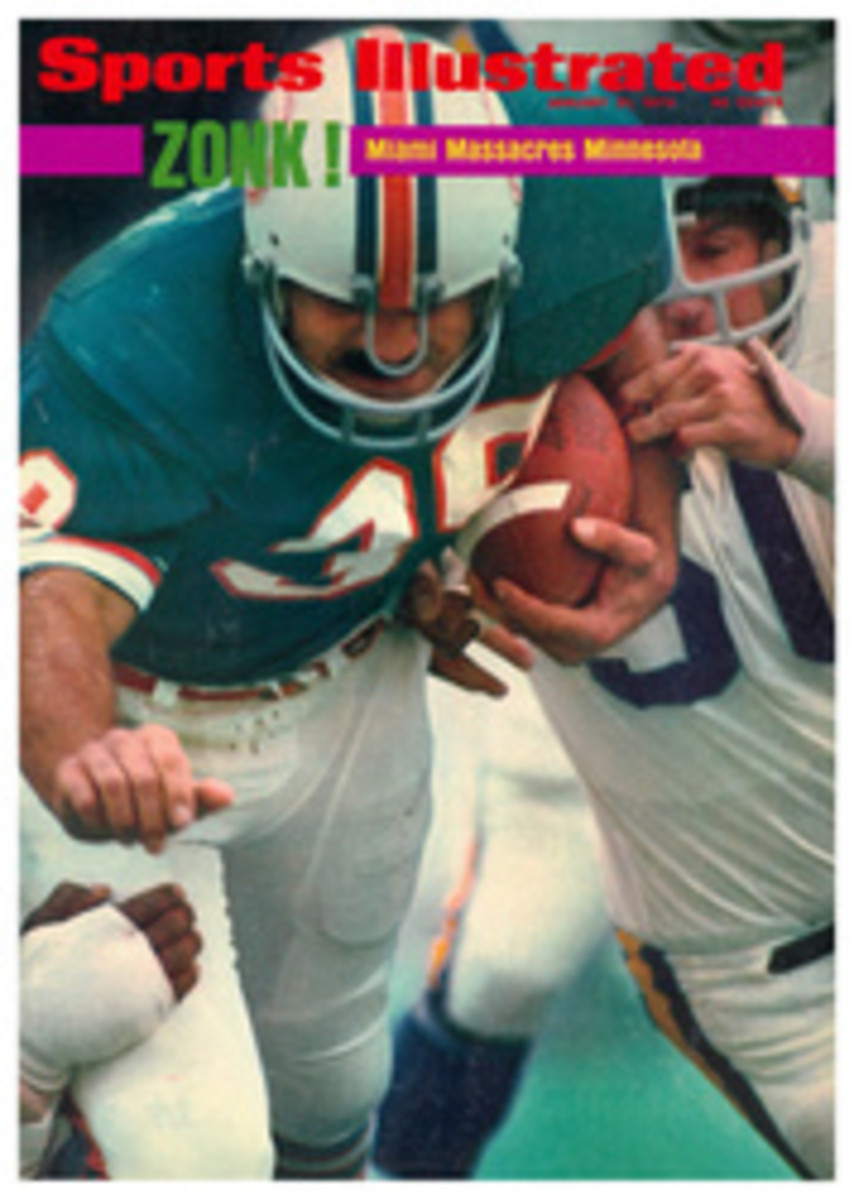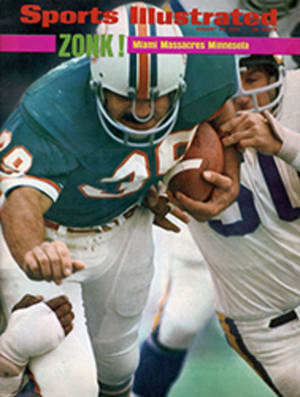
Knock, Knock, Who's There? Knox!
The football fortunes of Knox College in Galesburg, Ill. were running at less than flood tide during the '60s. From 1960 through 1969 "Old Siwash" lost 70 games, tying three and winning only eight.
Of course, it had been worse—there was the period of 1931-34 when Knox suffered 27 straight defeats. The fact is, at no time in its long membership in the Midwest Conference had Siwash really alarmed its league rivals, let alone such superpowers as Nebraska and Notre Dame. Notre Dame?
Knox did play Notre Dame in football. It was quite a spell back, along about the time George Fitch's fictional fullback, Ole Skjarsen, was punching imaginary holes in opposing front walls At Good Old Siwash, and a lad named Knute Rockne was still in high school. But more than 70 years ago, on Nov. 8, 1902, Knox and Notre Dame had it out at Rock Island, Ill. for the Western "small-college championship."
Though a decade away from any sort of national stature, Notre Dame was still a tough kid on its own block, with a creditable record against Western Conference opponents; in fact, in 1902 the Irish were defending Indiana state champs.
In Captain Lou (Red) Salmon, revered by earlier generations of alumni and fans as the greatest fullback in their history, the Irish had their first All-Western star. Running low, with a high, jarring knee action. Salmon could hit a line so fast and hard it usually took two or three tacklers to stop him; he had given Michigan a rough time a few weeks earlier, though the Irish had lost: this was the only defeat on Notre Dame's record going into the Knox game.
At the time, Siwash was no patsy either, having beaten Northwestern and Kansas, losing only to Chicago 5-0 after soundly outplaying the Maroons. A big, agile line, led by 232-pound George Martin and 210-pound R.R. Franz, operated in front of a small, fast backfield featuring Quarterback Johnny Grogan and Halfbacks Joe Zalusky and Chuck Hopkins. Babe Wilson at end and Henning Ackerson at fullback lent substance to the offense.
Zalusky was Knox's mini-counter to Salmon. A gutty little athlete, Joe not only ran the ball but, like Lou, did all the kicking. At safety he was a tiger on punt returns, as he had proved to Northwestern a couple of weeks before with a 106-yard runback (the fields in those days were 110 yards long).
The week before the game the tide of excitement spilled over the Knox campus to engulf Galesburg. It even got to the school's crosstown rival, Lombard College. Saturday morning a whooping mass of 800 souls was on hand when the team took off for Rock Island. South Bend and Notre Dame, it might be noted, were taking things more casually.
A sellout crowd of nearly 4,000 packed the Rock Island baseball park that afternoon, among them a courageous character perched on a small platform atop a tall pole, high above the bleachers. He was a telephone operator hired to relay the play-by-play back to the offices of the Galesburg Evening Mail via a leased long-distance line.
The game didn't start until 3:15, when Salmon kicked off to the Knox five-yard line. Zalusky returned 15 yards. The first play failed to dent the Irish, but on the second Joe lit out around left end, turned the corner behind good blocking and went 67 yards to the Notre Dame 23 before being brought down.
Here Wilson took over, sweeping the Irish ends four times before being pushed up and over the packed Irish defense for the last two feet. Zalusky kicked the goal and Knox had a 6-0 lead only 4½ minutes into the game.
Stung by the quick touchdown, Notre Dame recovered a fumble at the Knox 38 after the kickoff and turned Salmon loose. Sometimes hurdling, sometimes bulldozing straight ahead on 12 of 13 plays, Lou smashed to a first down on the Siwash six. He hit the middle for two more, but the Knox goal-line defense dumped him for a slight loss on the second try. With only one down remaining (in 1902 you had to gain five yards in three downs instead of 10 in four) and four yards to go, Irish Quarterback Fuzzy McGlew tried to make it with a now long-forgotten maneuver called a quarterback kick. Siwash Captain Fred Ewing checked the move by getting to the ball first.
After Zalusky punted to midfield, Knox got a break when Martin stormed through to block and recover Salmon's return kick, but the opportunity fizzled in another fumble. The rest of the half was a bitterly waged standoff.
Much of the second half was a beautiful duel between Salmon and Zalusky. Joe skirted end once for 30 yards but was short on a 50-yard placement attempt, while Lou continued to bounce off the hardening Knox defense. Notre Dame's unimaginative attack, consisting mostly of sending Salmon and Jim Doar straight up the middle, was effectively smothered.
Then, with about 10 minutes left to play and darkness approaching, a holding call gave Knox possession on the Irish 18. Ackerson blasted four, five and nine yards to put the ball only a foot from the goal line, then went over. A tired and battered Zalusky converted, making the score 12-0, favor Knox, before giving way to Fred Prince, the only substitution for either side all afternoon. By now it was too dark to see the play from the stands, but after the kickoff Notre Dame retrieved a fumble on the Siwash 33, and Salmon shot through center for 12 yards. George Nyere added 15 and the Knox defenders resorted to flattening anybody who ran, including each other, in an effort to locate the ballcarrier. End Harry Whitmore was knocked stiff on the play, lying on the 25-yard line with Franz standing over him vainly trying to call time out. Notre Dame lined up quickly and sent Salmon through the shorthanded defense for a touchdown.
Knox had not even tried to stop him, arguing that time had been called and the touchdown didn't count, but the referee let it stand. When Nyere's try for goal failed because he couldn't see the goal posts, everybody agreed to call it off, though three minutes remained on the clock.
Even before the Evening Mail's intrepid aerial reporter had descended from his perch, back in delirious Galesburg feverish planning had begun for a rousing welcome home to the sturdy Knox team that had bludgeoned Notre Dame 12-5 to reign as "college champion of the West."
For what was the first, and may well remain the last, time.

